Events
| Name | organizer | Where |
|---|---|---|
| MBCC “Doing Business with Mongolia seminar and Christmas Receptiom” Dec 10. 2025 London UK | MBCCI | London UK Goodman LLC |
NEWS
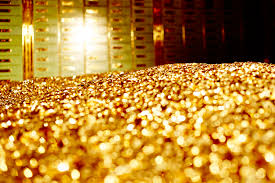
Central bank purchases 2.4 tons of precious metal in November www.montsame.mn
In November, the gold purchase of the Bank of Mongolia (BoM) was 2,667.0 kg, raising the BoM’s total precious metal purchase of 2022 to 19.9 tons.
Since the beginning of this year, the BoM branches in Darkhan-Uul and Bayankhongor aimags have bought 2,780.1 kg and 1,332.0 kg of precious metals respectively.
In November, the average price of BoM’s purchase of 1 gram of gold was MNT 197,545 last month.
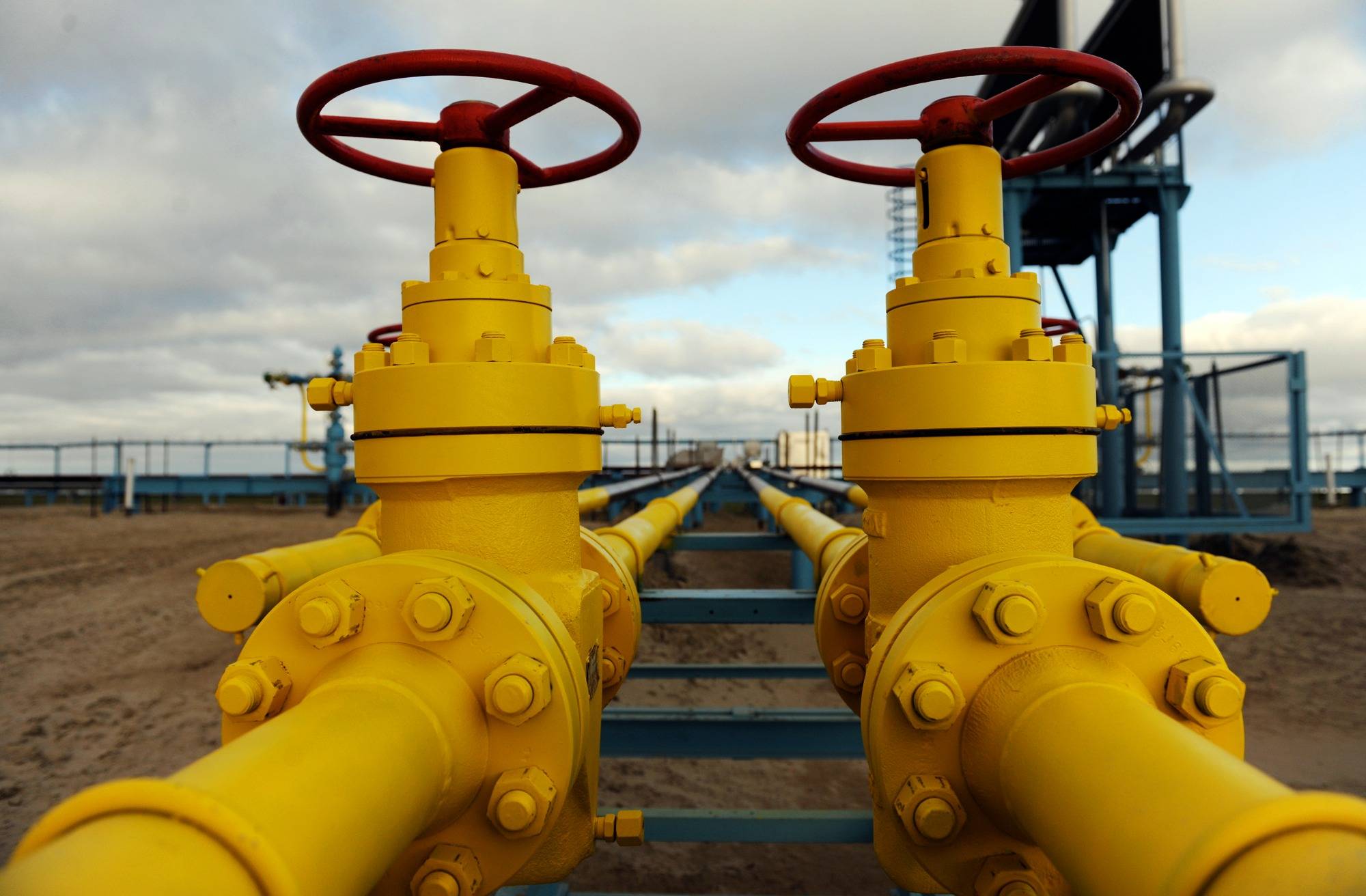
Mongolian President Says He Supports Russia-China Oil And Gas Piplines Through Mongolia www.reuters.com
Mongolian President Ukhnaagiin Khurelsukh said on Thursday that he supports the construction of oil and gas pipelines from Russia to China via Mongolia.
Speaking via translator at a trilateral meeting with Russian President Vladimir Putin and Chinese President Xi Jinping at a summit of the Shanghai Cooperation Organisation in the Uzbek city of Samarkand, Khurelsukh backed the plans, proposing studies of their economic feasability.
Khurelsukh said: "We also support the construction of oil and gas pipelines to supply natural gas from Russia to China through the territory of Mongolia and propose to study this issue from the viewpoint of technical and economic justification".
Russian energy giant Gazprom hopes to build the Power of Siberia 2 gas pipeline via Mongolia to China with a view to exporting 50 billion cubic metres of gas per year via the route by 2030. No plans for an oil pipeline via Mongolia have yet been formally proposed.
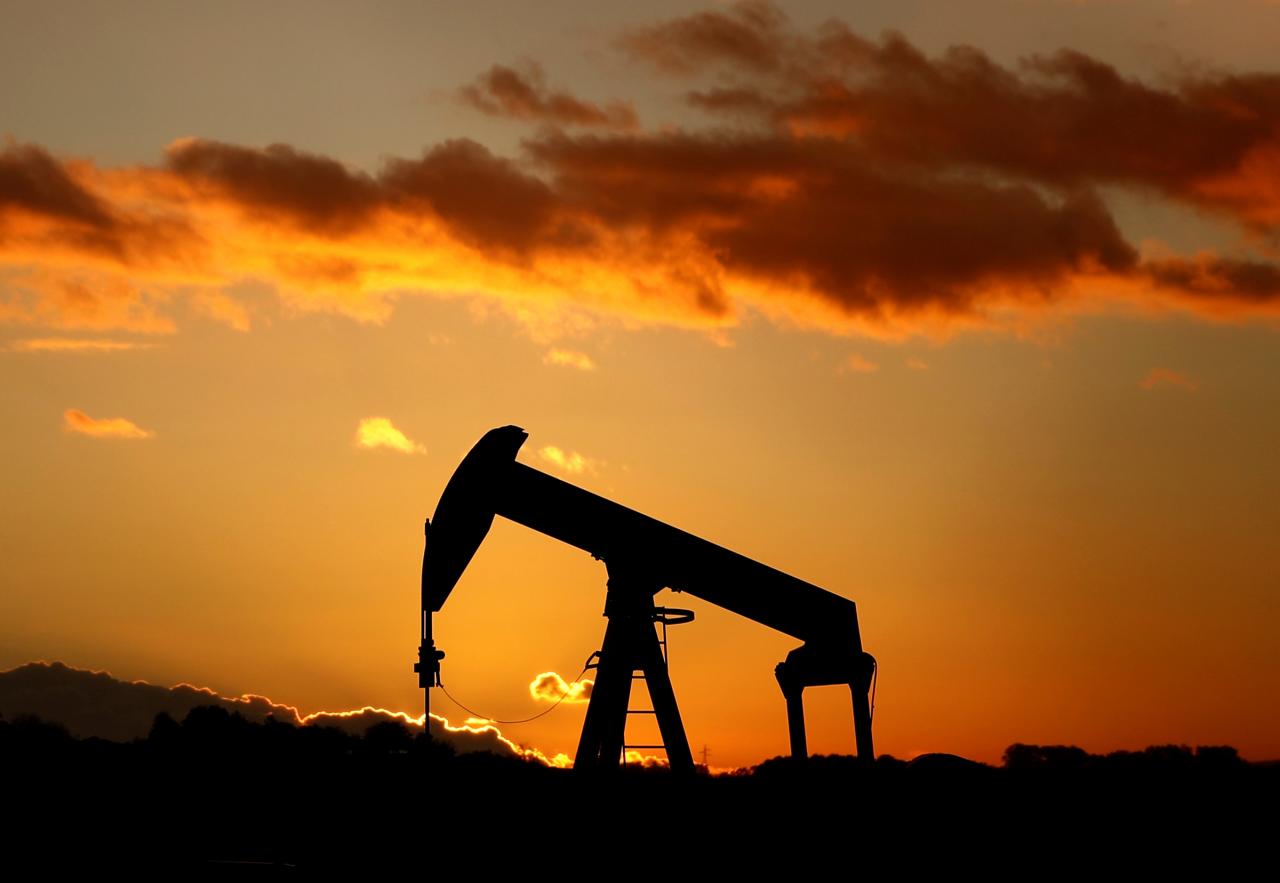
Talon raises cash as it takes stake in Mongolian project www.miningweekly.com
PERTH (miningweekly.com) – Oil and gas explorer Talon Energy will raise A$12-million in a share placement and will acquire a 33% participating interest in a production sharing agreement over the Gurvantes coal seam gas project, in Mongolia.
The ASX-listed Talon on Thursday announced that it would place some 85.7-million new shares at a price of 14c each, with the placement well supported by existing institutional and sophisticated investors.
“The success of the placement has provided Talon with a sound financial footing as it moves into its next phase of growth, the development of its portfolio,” aid MD Colby Hauser.
“With the success of placement the company has been able elect to take a 33% participating interest in the Gurvantes XXXV joint venture (JV), where our election to commit to the JV required the company to commit to fund the first $3.15-million of expenditure of the Stage 2 pilot well program, and 33% of ongoing expenditure at Gurvantes, as well as pay an additional $809 333 to TMK, based on the recently announced 1.2 Tcf 2C contingent resource for Gurvantes.
“The placement has also removed the uncertainty around funding for the coming months as the company works towards finalising negotiations to secure a debt facility to fund the development at Walyering, which will only become available to draw on following the achievement a near term project milestones.”
Commercial production from the Walyering project is planned for the first quarter of 2023.
Talon said on Thursday that In conjunction with the funds received through the placement, discussions on a debt facility to fund the development of Walyering, are continuing, and are well advanced. Once finalised, the company will be fully funded for forecasted activities through to first revenues at Walyering, and Gurvantes activities to the end of the 2023.
EDITED BY: CREAMER MEDIA REPORTER
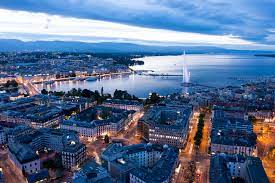
Mongolia’s Efforts Toward Ensuring Implementation of BWC Presented www.montsame.mn
A conference to review the implementation of the Biological Weapons Convention (BWC) is being held in Geneva between November 28 and December 16.
During the General Debate which took place on the first day of the conference, Mongolia’s Ambassador and Permanent Representative to the United Nations Office and other international organizations D. Gerelmaa delivered remarks, presenting the measures taken by the Government of Mongolia in ensuring the implementation of the BWC.
In her remarks, she reiterated that the Government of Mongolia stands committed to implementing the BWC within the framework of its peace-loving foreign policy. While stressing the importance of mutually sharing knowledge and experience within the framework of realizing the BWC and further consolidating cooperation between the member states while giving details on the measures carried out by the Government of Mongolia in this sphere.
The BWC is a key element in the international community’s efforts to address weapon of mass destruction proliferation and it has established a strong norm against biological weapons. The Convention has reached almost universal membership with 184 States Parties and four Signatory States.

At least one killed due to a fire at an oil storage facility in Darkhan Dec. 1 www.crisis24.garda.com
At least one person has died due to a fire at the Tes Petroleum LLC oil storage facility in Darkhan city, Darkhan-Uul Province, Dec. 1. Two others are also missing as dozens of emergency personnel continue rescue works. The blaze started around 09:21. The cause of the incident is unclear. Local media reports evacuations have affected nearby buildings.
Heightened security and localized transport disruptions are likely in the affected area. Authorities will probably restrict access to nearby roads to facilitate the movement of emergency vehicles. Officials may also mandate additional building evacuations and business closures in the vicinity as a precaution until clearance operations and investigations end.
The incident site is approximately 142 km (88 miles) northeast of Erdenet.
Advice
Avoid the area until authorities give the all-clear. Seek alternative routes and allow additional travel time to nearby destinations. Consider remaining indoors if smoke is heavy, especially if you suffer from a respiratory illness such as asthma, or conditions that lead to increased risk from smoke exposure. Eye irritation is possible; flush irritated eyes with copious amounts of clean water. Heed all official instructions including evacuation orders.

"Road to ONE – Mongolia 2022” was successfully organized at Steppe Arena www.news.mn
This year, the “Road to ONE – Mongolia 2022” project of the world-class mixed martial arts association ONE Championship was officially organized for the first time in Mongolia on November 26, 2022, the Republic Day, at Mongolia’s first Olympic-standard art, culture and sports palace Steppe Arena with a full audience.
The Road to ONE competition was organized by Steppe Arena in the form of a 10-episode reality show and a 2-episode live broadcast of the championship. The winner of the competition, the two-time champion of “MGL-1 Fighting Championship”, mixed martial artist B. Enkh-Orgil won the right to sign a contract with “ONE Championship” worth 100,000 USD. The prize was presented by Rich Franklin, the Vice President of One Championship and three-time UFC World Champion.
Mr. Tsagaan Puntsag, Chairman of the Board of Steppe Arena, opened the final match by remarking, “I am happy that One Championship, which is the most popular martial arts association in the world, and Steppe Arena jointly organizing the Road to ONE – Mongolia 2022, an international tournament for the first time in Mongolia at international standard. This is a historic event that provides the opportunity for the Mongolian people to enjoy the World Stage here at home. This event will be held annually, and we plan to outreach Central Asia as well. I hope it will have an important impact on the development of tourism in Mongolia.”
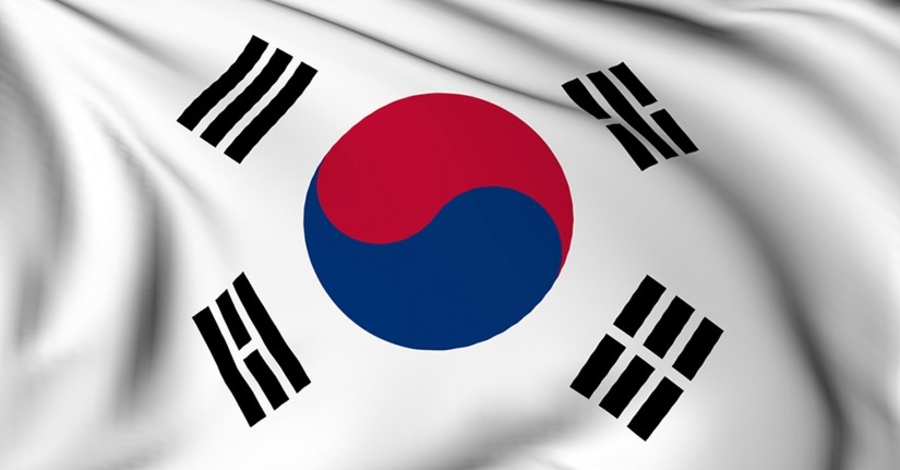
New VU-UBMK partnership expands international opportunities for students in Mongolia www.vinu.edu
VINCENNES, Ind. - Vincennes University and the UBMK School have signed a memorandum of understanding that will create new educational and transformative opportunities for UBMK students in Ulaanbaatar, Mongolia.
UBMK was established in 1998 by the Korean missionary association in Mongolia. It is the only K-12 Korean International school approved by the Ministry of Education and Science of Mongolia. After graduating from UBMK, students can continue their education at an American university or Korean university.
According to the UBMK Director of International Affairs Dr. Elin Jung, “Our students will have the opportunity to apply their learning in more settings, amongst more people in the future. They will not be constrained to Mongolia or Korea. Our students now have the chance to achieve their dreams, thanks to Vincennes University. With the provision of the MOU from Vincennes University, they can study in the United States. It is an attractive and encouraging path for both parents and students.”
According to VU President Dr. Chuck Johnson, “The new agreement with UBMK represents a great addition to VU's existing international partnerships, and we look forward to building a lasting relationship that will benefit generations of UBMK students.”
With the goal of nurturing global talents who can love their country and serve in the international community based on upright character, faith, Korean identity cultivation education, and exclusive STEM education, the UBMK School provides specialized foreign language education with required English and Mongolian language education, customized career guidance, and domestic and overseas vision trips during the school year.
UBMK students have strong aspirations of studying abroad, and Jung believes that VU will offer them a great opportunity because of the investment VU makes in its students.
VU has transfer agreements with many learning universities, including Purdue and IU in Indiana, that will allow UBMK students the opportunity to transition smoothly from VU.
Jung and Esther Yoon, UBMK US School Representative,
tour the Additive Manufacturing and Reverse Engineering
Center with Interim Admissions Director Sarah McLin
During Jung’s visit to the Vincennes Campus in mid-November, she was enthusiastic about the University’s exceptional programs, facilities, and resources.
“The staff and faculty’s warmth, humility, and hospitality were delightful,” she said. “The Vincennes University department of mechanical engineering, anatomy lab, nursing class, and homeland security class and building were all engrossing and supremely informative. It was impressive to observe, learn, and simply experience our time at Vincennes.”
VU continues to build international partnerships that support enrollment and create access and opportunities for students no matter where they live.
Emerging from the pandemic, VU has seen an increase in international enrollment. As travel restrictions have been lifted or relaxed, there are more opportunities for international students to enroll at VU. Many students are studying on the Vincennes Campus, while others are getting a jump start on their education by enrolling in VU's new international online cohort program, launched during the pandemic. The online cohort program currently enrolls students from China, Korea, and India, and provides an accessible and affordable pathway to attending VU.
Through a combination of initiatives and despite the impact of the pandemic, the University has doubled international enrollments since 2016. The uptick is helping to further diversity in the student population and is exposing VU students to more global cultures and experiences. More than 22 countries are represented at VU this fall, including Bosnia and Herzegovina, Brazil, France, Greece, India, Italy, Jamaica, Japan, Kenya, Netherlands, Spain, South Korea, Taiwan, and Vietnam.
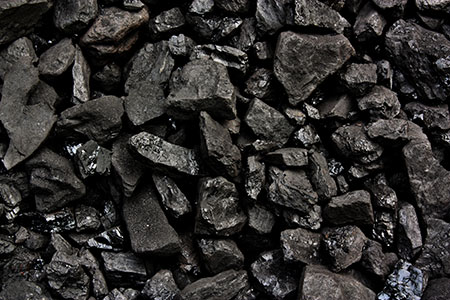
China, Mongolia to expand coal trade, sign more long-term contracts www.sxcoal.com
China and Mongolia agreed during Mongolian President Ukhnaagiin Khurelsukh's visit to China during November 27-28 to support companies in the two nations to expand coal and iron ore trades and sign medium- and long-term coal contracts.
Cooperation in areas such as trade, investment, finance, mineral energy, infrastructure, digital economy, and green development will be further expanded.
Specifically, the two nations will take energy cooperation as one of the priority directions of China-Mongolia cooperation, promoting the development of large-scale infrastructure and energy resources projects and accelerating the construction of the planned cross-border railways.
The two sides agreed to promote new freight equipment and technology at the border ports, and effectively improve the ability of customs clearance capacity. Construction of the China-Mongolia Erenhot-Zamin Uud Economic Cooperation Zone will be also encouraged, according to the meeting.
Besides, Mongolia and China will work with Russia together to intensify efforts to promote the construction of the China-Mongolia-Russia Economic Corridor and to accelerate the upgrading and development of the middle-line railway of the corridor. The laying project of China-Russia natural gas pipeline transiting through Mongolia will also be actively promoted.
(Writing by Emma Yang Editing by Tammy Yang)
For any questions, please contact us by inquiry@fwenergy.com or +86-351-7219322.
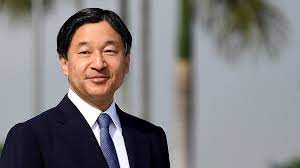
Japan Emperor, Empress Meet Mongolian Pres. at Palace www.nippon.com
Tokyo, Dec. 1 (Jiji Press)--Japanese Emperor Naruhito and Empress Masako met with visiting Mongolian President Ukhnaa Khurelsukh and his wife at the Imperial Palace in Tokyo on Thursday.
According to the Imperial Household Agency, the Emperor, during the 30-minute meeting, touched on the 50th anniversary of Japan-Mongolia diplomatic relations this year, saying, "I hope the two countries' friendly ties will develop further thanks to your visit to Japan."
The Mongolian president said he is very happy to be able to visit Japan in such an important year and meet the Emperor and Empress.
Referring to Emperor Naruhito's visit to Mongolia in 2007 when he was Crown Prince, the president said the visit was so wonderful that people in Mongolia still talk about it today.
On Thursday evening, Emperor Naruhito and Empress Masako went to a concert of the Mongolian State Morin Khuur Ensemble in Tokyo's Shibuya Ward together with the Mongolian president and his wife. When he visited Mongolia, the Emperor played the viola with the orchestra.

China-Mongolia freight train departing from E China's Lianyungang Port records over 80 trips this year www.english.www.gov.cn
One freight train loaded with second-hand cars, tyres and other goods departed from the China-Kazakhstan Logistics Base in Lianyungang City of east China's Jiangsu Province, and is expected to reach Mongolia's Ulaanbaatar.
The China-Mongolia Railway Express that pulls out of the Lianyungang Port has recorded more than 80 trips for the first time in a year, a significant increase of 130.9 percent year on year.
- «
- 1
- 2
- 3
- 4
- 5
- 6
- 7
- 8
- 9
- 10
- 11
- 12
- 13
- 14
- 15
- 16
- 17
- 18
- 19
- 20
- 21
- 22
- 23
- 24
- 25
- 26
- 27
- 28
- 29
- 30
- 31
- 32
- 33
- 34
- 35
- 36
- 37
- 38
- 39
- 40
- 41
- 42
- 43
- 44
- 45
- 46
- 47
- 48
- 49
- 50
- 51
- 52
- 53
- 54
- 55
- 56
- 57
- 58
- 59
- 60
- 61
- 62
- 63
- 64
- 65
- 66
- 67
- 68
- 69
- 70
- 71
- 72
- 73
- 74
- 75
- 76
- 77
- 78
- 79
- 80
- 81
- 82
- 83
- 84
- 85
- 86
- 87
- 88
- 89
- 90
- 91
- 92
- 93
- 94
- 95
- 96
- 97
- 98
- 99
- 100
- 101
- 102
- 103
- 104
- 105
- 106
- 107
- 108
- 109
- 110
- 111
- 112
- 113
- 114
- 115
- 116
- 117
- 118
- 119
- 120
- 121
- 122
- 123
- 124
- 125
- 126
- 127
- 128
- 129
- 130
- 131
- 132
- 133
- 134
- 135
- 136
- 137
- 138
- 139
- 140
- 141
- 142
- 143
- 144
- 145
- 146
- 147
- 148
- 149
- 150
- 151
- 152
- 153
- 154
- 155
- 156
- 157
- 158
- 159
- 160
- 161
- 162
- 163
- 164
- 165
- 166
- 167
- 168
- 169
- 170
- 171
- 172
- 173
- 174
- 175
- 176
- 177
- 178
- 179
- 180
- 181
- 182
- 183
- 184
- 185
- 186
- 187
- 188
- 189
- 190
- 191
- 192
- 193
- 194
- 195
- 196
- 197
- 198
- 199
- 200
- 201
- 202
- 203
- 204
- 205
- 206
- 207
- 208
- 209
- 210
- 211
- 212
- 213
- 214
- 215
- 216
- 217
- 218
- 219
- 220
- 221
- 222
- 223
- 224
- 225
- 226
- 227
- 228
- 229
- 230
- 231
- 232
- 233
- 234
- 235
- 236
- 237
- 238
- 239
- 240
- 241
- 242
- 243
- 244
- 245
- 246
- 247
- 248
- 249
- 250
- 251
- 252
- 253
- 254
- 255
- 256
- 257
- 258
- 259
- 260
- 261
- 262
- 263
- 264
- 265
- 266
- 267
- 268
- 269
- 270
- 271
- 272
- 273
- 274
- 275
- 276
- 277
- 278
- 279
- 280
- 281
- 282
- 283
- 284
- 285
- 286
- 287
- 288
- 289
- 290
- 291
- 292
- 293
- 294
- 295
- 296
- 297
- 298
- 299
- 300
- 301
- 302
- 303
- 304
- 305
- 306
- 307
- 308
- 309
- 310
- 311
- 312
- 313
- 314
- 315
- 316
- 317
- 318
- 319
- 320
- 321
- 322
- 323
- 324
- 325
- 326
- 327
- 328
- 329
- 330
- 331
- 332
- 333
- 334
- 335
- 336
- 337
- 338
- 339
- 340
- 341
- 342
- 343
- 344
- 345
- 346
- 347
- 348
- 349
- 350
- 351
- 352
- 353
- 354
- 355
- 356
- 357
- 358
- 359
- 360
- 361
- 362
- 363
- 364
- 365
- 366
- 367
- 368
- 369
- 370
- 371
- 372
- 373
- 374
- 375
- 376
- 377
- 378
- 379
- 380
- 381
- 382
- 383
- 384
- 385
- 386
- 387
- 388
- 389
- 390
- 391
- 392
- 393
- 394
- 395
- 396
- 397
- 398
- 399
- 400
- 401
- 402
- 403
- 404
- 405
- 406
- 407
- 408
- 409
- 410
- 411
- 412
- 413
- 414
- 415
- 416
- 417
- 418
- 419
- 420
- 421
- 422
- 423
- 424
- 425
- 426
- 427
- 428
- 429
- 430
- 431
- 432
- 433
- 434
- 435
- 436
- 437
- 438
- 439
- 440
- 441
- 442
- 443
- 444
- 445
- 446
- 447
- 448
- 449
- 450
- 451
- 452
- 453
- 454
- 455
- 456
- 457
- 458
- 459
- 460
- 461
- 462
- 463
- 464
- 465
- 466
- 467
- 468
- 469
- 470
- 471
- 472
- 473
- 474
- 475
- 476
- 477
- 478
- 479
- 480
- 481
- 482
- 483
- 484
- 485
- 486
- 487
- 488
- 489
- 490
- 491
- 492
- 493
- 494
- 495
- 496
- 497
- 498
- 499
- 500
- 501
- 502
- 503
- 504
- 505
- 506
- 507
- 508
- 509
- 510
- 511
- 512
- 513
- 514
- 515
- 516
- 517
- 518
- 519
- 520
- 521
- 522
- 523
- 524
- 525
- 526
- 527
- 528
- 529
- 530
- 531
- 532
- 533
- 534
- 535
- 536
- 537
- 538
- 539
- 540
- 541
- 542
- 543
- 544
- 545
- 546
- 547
- 548
- 549
- 550
- 551
- 552
- 553
- 554
- 555
- 556
- 557
- 558
- 559
- 560
- 561
- 562
- 563
- 564
- 565
- 566
- 567
- 568
- 569
- 570
- 571
- 572
- 573
- 574
- 575
- 576
- 577
- 578
- 579
- 580
- 581
- 582
- 583
- 584
- 585
- 586
- 587
- 588
- 589
- 590
- 591
- 592
- 593
- 594
- 595
- 596
- 597
- 598
- 599
- 600
- 601
- 602
- 603
- 604
- 605
- 606
- 607
- 608
- 609
- 610
- 611
- 612
- 613
- 614
- 615
- 616
- 617
- 618
- 619
- 620
- 621
- 622
- 623
- 624
- 625
- 626
- 627
- 628
- 629
- 630
- 631
- 632
- 633
- 634
- 635
- 636
- 637
- 638
- 639
- 640
- 641
- 642
- 643
- 644
- 645
- 646
- 647
- 648
- 649
- 650
- 651
- 652
- 653
- 654
- 655
- 656
- 657
- 658
- 659
- 660
- 661
- 662
- 663
- 664
- 665
- 666
- 667
- 668
- 669
- 670
- 671
- 672
- 673
- 674
- 675
- 676
- 677
- 678
- 679
- 680
- 681
- 682
- 683
- 684
- 685
- 686
- 687
- 688
- 689
- 690
- 691
- 692
- 693
- 694
- 695
- 696
- 697
- 698
- 699
- 700
- 701
- 702
- 703
- 704
- 705
- 706
- 707
- 708
- 709
- 710
- 711
- 712
- 713
- 714
- 715
- 716
- 717
- 718
- 719
- 720
- 721
- 722
- 723
- 724
- 725
- 726
- 727
- 728
- 729
- 730
- 731
- 732
- 733
- 734
- 735
- 736
- 737
- 738
- 739
- 740
- 741
- 742
- 743
- 744
- 745
- 746
- 747
- 748
- 749
- 750
- 751
- 752
- 753
- 754
- 755
- 756
- 757
- 758
- 759
- 760
- 761
- 762
- 763
- 764
- 765
- 766
- 767
- 768
- 769
- 770
- 771
- 772
- 773
- 774
- 775
- 776
- 777
- 778
- 779
- 780
- 781
- 782
- 783
- 784
- 785
- 786
- 787
- 788
- 789
- 790
- 791
- 792
- 793
- 794
- 795
- 796
- 797
- 798
- 799
- 800
- 801
- 802
- 803
- 804
- 805
- 806
- 807
- 808
- 809
- 810
- 811
- 812
- 813
- 814
- 815
- 816
- 817
- 818
- 819
- 820
- 821
- 822
- 823
- 824
- 825
- 826
- 827
- 828
- 829
- 830
- 831
- 832
- 833
- 834
- 835
- 836
- 837
- 838
- 839
- 840
- 841
- 842
- 843
- 844
- 845
- 846
- 847
- 848
- 849
- 850
- 851
- 852
- 853
- 854
- 855
- 856
- 857
- 858
- 859
- 860
- 861
- 862
- 863
- 864
- 865
- 866
- 867
- 868
- 869
- 870
- 871
- 872
- 873
- 874
- 875
- 876
- 877
- 878
- 879
- 880
- 881
- 882
- 883
- 884
- 885
- 886
- 887
- 888
- 889
- 890
- 891
- 892
- 893
- 894
- 895
- 896
- 897
- 898
- 899
- 900
- 901
- 902
- 903
- 904
- 905
- 906
- 907
- 908
- 909
- 910
- 911
- 912
- 913
- 914
- 915
- 916
- 917
- 918
- 919
- 920
- 921
- 922
- 923
- 924
- 925
- 926
- 927
- 928
- 929
- 930
- 931
- 932
- 933
- 934
- 935
- 936
- 937
- 938
- 939
- 940
- 941
- 942
- 943
- 944
- 945
- 946
- 947
- 948
- 949
- 950
- 951
- 952
- 953
- 954
- 955
- 956
- 957
- 958
- 959
- 960
- 961
- 962
- 963
- 964
- 965
- 966
- 967
- 968
- 969
- 970
- 971
- 972
- 973
- 974
- 975
- 976
- 977
- 978
- 979
- 980
- 981
- 982
- 983
- 984
- 985
- 986
- 987
- 988
- 989
- 990
- 991
- 992
- 993
- 994
- 995
- 996
- 997
- 998
- 999
- 1000
- 1001
- 1002
- 1003
- 1004
- 1005
- 1006
- 1007
- 1008
- 1009
- 1010
- 1011
- 1012
- 1013
- 1014
- 1015
- 1016
- 1017
- 1018
- 1019
- 1020
- 1021
- 1022
- 1023
- 1024
- 1025
- 1026
- 1027
- 1028
- 1029
- 1030
- 1031
- 1032
- 1033
- 1034
- 1035
- 1036
- 1037
- 1038
- 1039
- 1040
- 1041
- 1042
- 1043
- 1044
- 1045
- 1046
- 1047
- 1048
- 1049
- 1050
- 1051
- 1052
- 1053
- 1054
- 1055
- 1056
- 1057
- 1058
- 1059
- 1060
- 1061
- 1062
- 1063
- 1064
- 1065
- 1066
- 1067
- 1068
- 1069
- 1070
- 1071
- 1072
- 1073
- 1074
- 1075
- 1076
- 1077
- 1078
- 1079
- 1080
- 1081
- 1082
- 1083
- 1084
- 1085
- 1086
- 1087
- 1088
- 1089
- 1090
- 1091
- 1092
- 1093
- 1094
- 1095
- 1096
- 1097
- 1098
- 1099
- 1100
- 1101
- 1102
- 1103
- 1104
- 1105
- 1106
- 1107
- 1108
- 1109
- 1110
- 1111
- 1112
- 1113
- 1114
- 1115
- 1116
- 1117
- 1118
- 1119
- 1120
- 1121
- 1122
- 1123
- 1124
- 1125
- 1126
- 1127
- 1128
- 1129
- 1130
- 1131
- 1132
- 1133
- 1134
- 1135
- 1136
- 1137
- 1138
- 1139
- 1140
- 1141
- 1142
- 1143
- 1144
- 1145
- 1146
- 1147
- 1148
- 1149
- 1150
- 1151
- 1152
- 1153
- 1154
- 1155
- 1156
- 1157
- 1158
- 1159
- 1160
- 1161
- 1162
- 1163
- 1164
- 1165
- 1166
- 1167
- 1168
- 1169
- 1170
- 1171
- 1172
- 1173
- 1174
- 1175
- 1176
- 1177
- 1178
- 1179
- 1180
- 1181
- 1182
- 1183
- 1184
- 1185
- 1186
- 1187
- 1188
- 1189
- 1190
- 1191
- 1192
- 1193
- 1194
- 1195
- 1196
- 1197
- 1198
- 1199
- 1200
- 1201
- 1202
- 1203
- 1204
- 1205
- 1206
- 1207
- 1208
- 1209
- 1210
- 1211
- 1212
- 1213
- 1214
- 1215
- 1216
- 1217
- 1218
- 1219
- 1220
- 1221
- 1222
- 1223
- 1224
- 1225
- 1226
- 1227
- 1228
- 1229
- 1230
- 1231
- 1232
- 1233
- 1234
- 1235
- 1236
- 1237
- 1238
- 1239
- 1240
- 1241
- 1242
- 1243
- 1244
- 1245
- 1246
- 1247
- 1248
- 1249
- 1250
- 1251
- 1252
- 1253
- 1254
- 1255
- 1256
- 1257
- 1258
- 1259
- 1260
- 1261
- 1262
- 1263
- 1264
- 1265
- 1266
- 1267
- 1268
- 1269
- 1270
- 1271
- 1272
- 1273
- 1274
- 1275
- 1276
- 1277
- 1278
- 1279
- 1280
- 1281
- 1282
- 1283
- 1284
- 1285
- 1286
- 1287
- 1288
- 1289
- 1290
- 1291
- 1292
- 1293
- 1294
- 1295
- 1296
- 1297
- 1298
- 1299
- 1300
- 1301
- 1302
- 1303
- 1304
- 1305
- 1306
- 1307
- 1308
- 1309
- 1310
- 1311
- 1312
- 1313
- 1314
- 1315
- 1316
- 1317
- 1318
- 1319
- 1320
- 1321
- 1322
- 1323
- 1324
- 1325
- 1326
- 1327
- 1328
- 1329
- 1330
- 1331
- 1332
- 1333
- 1334
- 1335
- 1336
- 1337
- 1338
- 1339
- 1340
- 1341
- 1342
- 1343
- 1344
- 1345
- 1346
- 1347
- 1348
- 1349
- 1350
- 1351
- 1352
- 1353
- 1354
- 1355
- 1356
- 1357
- 1358
- 1359
- 1360
- 1361
- 1362
- 1363
- 1364
- 1365
- 1366
- 1367
- 1368
- 1369
- 1370
- 1371
- 1372
- 1373
- 1374
- 1375
- 1376
- 1377
- 1378
- 1379
- 1380
- 1381
- 1382
- 1383
- 1384
- 1385
- 1386
- 1387
- 1388
- 1389
- 1390
- 1391
- 1392
- 1393
- 1394
- 1395
- 1396
- 1397
- 1398
- 1399
- 1400
- 1401
- 1402
- 1403
- 1404
- 1405
- 1406
- 1407
- 1408
- 1409
- 1410
- 1411
- 1412
- 1413
- 1414
- 1415
- 1416
- 1417
- 1418
- 1419
- 1420
- 1421
- 1422
- 1423
- 1424
- 1425
- 1426
- 1427
- 1428
- 1429
- 1430
- 1431
- 1432
- 1433
- 1434
- 1435
- 1436
- 1437
- 1438
- 1439
- 1440
- 1441
- 1442
- 1443
- 1444
- 1445
- 1446
- 1447
- 1448
- 1449
- 1450
- 1451
- 1452
- 1453
- 1454
- 1455
- 1456
- 1457
- 1458
- 1459
- 1460
- 1461
- 1462
- 1463
- 1464
- 1465
- 1466
- 1467
- 1468
- 1469
- 1470
- 1471
- 1472
- 1473
- 1474
- 1475
- 1476
- 1477
- 1478
- 1479
- 1480
- 1481
- 1482
- 1483
- 1484
- 1485
- 1486
- 1487
- 1488
- 1489
- 1490
- 1491
- 1492
- 1493
- 1494
- 1495
- 1496
- 1497
- 1498
- 1499
- 1500
- 1501
- 1502
- 1503
- 1504
- 1505
- 1506
- 1507
- 1508
- 1509
- 1510
- 1511
- 1512
- 1513
- 1514
- 1515
- 1516
- 1517
- 1518
- 1519
- 1520
- 1521
- 1522
- 1523
- 1524
- 1525
- 1526
- 1527
- 1528
- 1529
- 1530
- 1531
- 1532
- 1533
- 1534
- 1535
- 1536
- 1537
- 1538
- 1539
- 1540
- 1541
- 1542
- 1543
- 1544
- 1545
- 1546
- 1547
- 1548
- 1549
- 1550
- 1551
- 1552
- 1553
- 1554
- 1555
- 1556
- 1557
- 1558
- 1559
- 1560
- 1561
- 1562
- 1563
- 1564
- 1565
- 1566
- 1567
- 1568
- 1569
- 1570
- 1571
- 1572
- 1573
- 1574
- 1575
- 1576
- 1577
- 1578
- 1579
- 1580
- 1581
- 1582
- 1583
- 1584
- 1585
- 1586
- 1587
- 1588
- 1589
- 1590
- 1591
- 1592
- 1593
- 1594
- 1595
- 1596
- 1597
- 1598
- 1599
- 1600
- 1601
- 1602
- 1603
- 1604
- 1605
- 1606
- 1607
- 1608
- 1609
- 1610
- 1611
- 1612
- 1613
- 1614
- 1615
- 1616
- 1617
- 1618
- 1619
- 1620
- 1621
- 1622
- 1623
- 1624
- 1625
- 1626
- 1627
- 1628
- 1629
- 1630
- 1631
- 1632
- 1633
- 1634
- 1635
- 1636
- 1637
- 1638
- 1639
- 1640
- 1641
- 1642
- 1643
- 1644
- 1645
- 1646
- 1647
- 1648
- 1649
- 1650
- 1651
- 1652
- 1653
- 1654
- 1655
- 1656
- 1657
- 1658
- 1659
- 1660
- 1661
- 1662
- 1663
- 1664
- 1665
- 1666
- 1667
- 1668
- 1669
- 1670
- 1671
- 1672
- 1673
- 1674
- 1675
- 1676
- 1677
- 1678
- 1679
- 1680
- 1681
- 1682
- 1683
- 1684
- 1685
- 1686
- 1687
- 1688
- 1689
- 1690
- 1691
- 1692
- 1693
- 1694
- »






